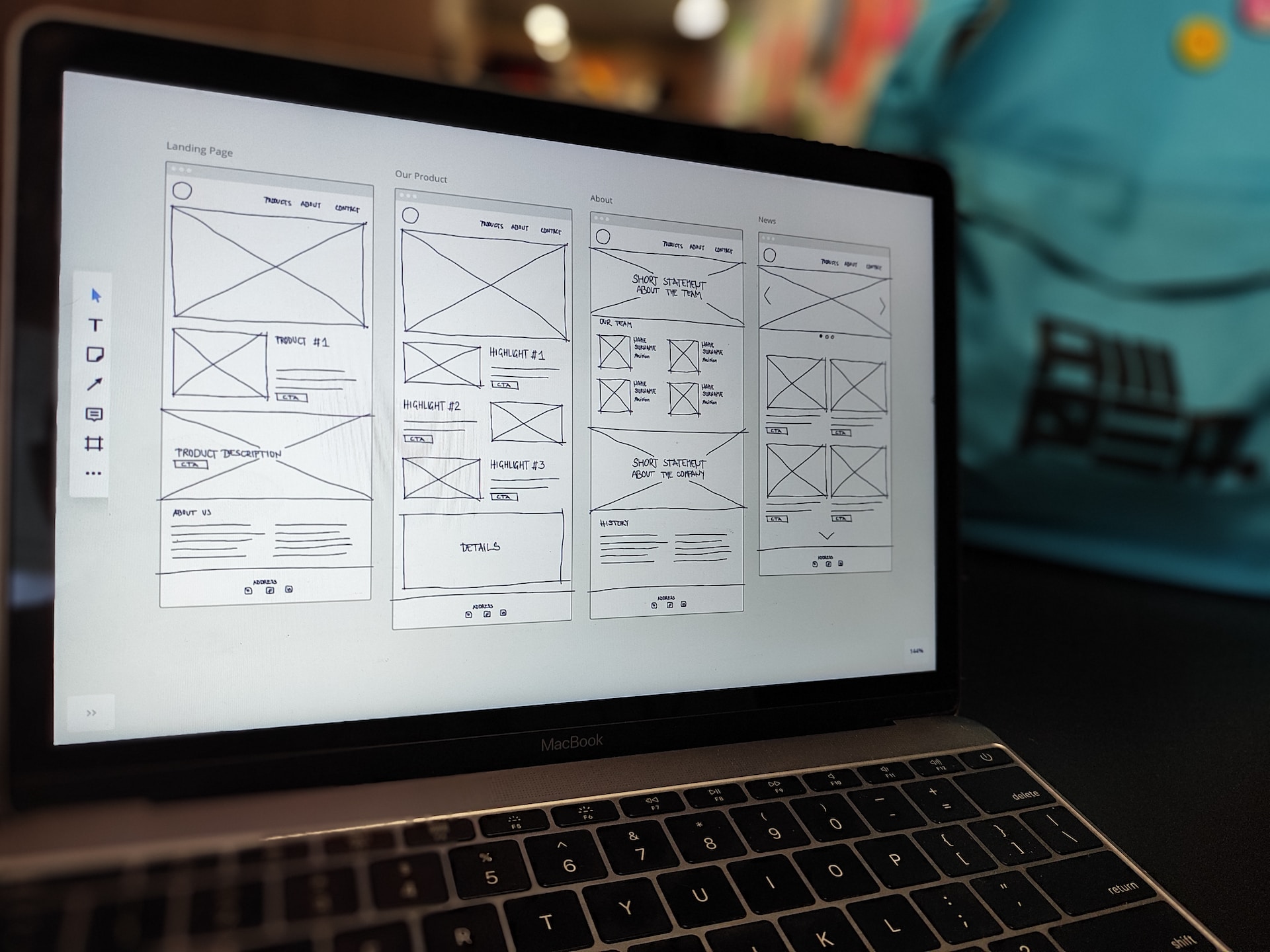How Analytics Can Improve User Experience With Data-Driven UX Design
Creating a seamless user experience has become paramount for businesses to succeed in digital spaces. But with so many factors to consider, how can businesses ensure optimal user experience? One answer is through data-driven UX design.
Quick Links
Data-driven UX design relies on analytics to assess and respond to user behavior. This means understanding how users interact with a given product or website and using that information to create an optimized experience tailored to the specific audience.
By using analytics, businesses can map out a blueprint of user behavior across their platforms, helping them to fill critical gaps in their user experiences.
Why Data Matters
When designing a user experience that truly resonates with your target audience, data is an incredibly powerful tool. But all data is not created equal. There are two distinct types of data that any UX designer should keep in mind: qualitative and quantitative data.
Qualitative data refers to the kind of data that can’t be easily measured with numbers or statistics. It includes things like user feedback, opinions, and emotions. Qualitative data is incredibly valuable because it provides insight into the “why” behind user behavior.
Quantitative data, on the other hand, is all about numbers. Analytics tools can help you track click-through rates, time spent on a page, and conversion rates. Quantitative data is fantastic for measuring your design decisions’ effectiveness and finding improvement areas.
So why does data matter? Well, without it, you’d essentially be designing in the dark. By collecting qualitative and quantitative data, you can create a user experience that’s visually appealing, functional, and enjoyable to users.
Benefits Of Data-Driven UX Design
By using data-driven design principles, businesses can maximize user engagement and conversions in a number of ways. This provides businesses with benefits such as:
Know Your Market Users Inside and Out
You can obtain valuable insights about your users through a data-driven UX audit. By analyzing user data, you can identify who your users are, their purchasing behaviors, as well as their motivations for using your product.
Having this understanding is crucial in creating a product that caters to the distinct requirements of your users.
Market Differentiation: Deliver What They Want, Not What You Think They Should Have
When it comes to design, incorporating design ops is essential to differentiate your product from others in the market. To achieve this, it’s vital to prioritize user needs over personal preferences.
That’s where data-driven UX design comes into play, providing valuable insights into your user base and aligning your digital products accordingly. You can create a standout product that resonates with your target audience by leveraging design ops to deliver what your users need.
Boost Brand Perception and Performance
A product’s success highly depends on how it’s perceived in the market. Data-driven UX design allows you to create a user experience that aligns with your brand image and helps boost brand perception. An intuitive and seamless user experience can go a long way in establishing a positive brand image and increasing customer loyalty.
Let The Data Tell You What Your Next Offer Should Be
User data is a powerful tool for determining what your customers want next. By analyzing user behavior and preferences, you can identify patterns that can help guide your product development strategy. This strategy ensures that your product stays relevant and your customers remain engaged with your brand.
Start Implementing Data-Driven UX Design Today
When getting started with data-driven UX design, there are several steps that you should take:
Collect Your Data
Before making any decisions based on data, you need to collect it. There are various ways to collect user data, including user testing, surveys, and analytics tools. For example, Analytics tools like Google Analytics and Hotjar allow you to see how users interact with your site, what pages they visit, and how long they stay on each page.
Functionality Testing
Testing to ensure your website or app functions as it should is a crucial step in data-driven UX design. Functionality testing involves testing all aspects of your website, such as loading time, ease of use, and overall user experience.
A/B Testing
A/B testing is a great way to determine which elements of your design work and which need to be tweaked. It involves testing two variations of a design element, such as an image or CTA button, to determine which performs better. By running A/B tests, you can determine what works and make improvements based on the collected data.
Heat Maps and Behavior Flows
Heat maps and behavior flows are great tools for analyzing user behavior. Heat maps show where users click, scroll, and hover on your website. Behavior flows provide insight into customers’ paths when navigating through your site. This data can be used to improve navigation flow and user experience.
Research
Research and user interviews can provide invaluable insight into how users interact with your product. Through user research, you can better understand who your customer base is, their purchasing behaviors, and their motivations for using your product. Having this understanding is crucial in creating a product that caters to the distinct needs of users.
Implement What You Learn
Once you have collected and analyzed the data, you can use it to create a better user experience. This could involve changing your website or app design, adjusting your product features, or updating your content. By implementing the insights you gain from user data, you can ensure that your product remains relevant and engaging for users.
UX Consulting
If you’re still feeling overwhelmed by the data-driven UX design process, you may want to consider hiring a professional UX consultant. A skilled consultant can provide valuable guidance regarding user experience and help identify areas of improvement. UX consulting can also help you define your goals and create a roadmap for achieving them.
Transform Your UX Design with Data-Driven Insights
Data-driven UX design is a powerful tool for creating an engaging and successful product. By collecting user data, testing functionality, running A/B tests, conducting research interviews, and using heat maps and behavior flows to analyze customer behaviors, you can gain invaluable insight into how users interact with your digital products and significantly improve your UX.
Author Bio: Jinny Oh

Jinny Oh is a globetrotting entrepreneur, angel investor, and renowned UX professional with a passion for Design Thinking. Embracing a fully nomadic lifestyle, Jinny has founded WANDR, an award-winning product strategy and UX design firm that operates with a remote team of experts. With a diverse clientele spanning over 300 startups, US Air Force and Fortune 500 companies like IBM, Geico, and Adobe, Jinny has propelled WANDR to the forefront of the industry.
As an advocate for Design Thinking and Remote Work, Jinny has shared her expertise as a keynote speaker, equipping them with the skills needed to excel in the ever-evolving digital landscape.
How to Use AI-Powered SEO Tools for WordPress eCommerce
SEO is a critical factor in the success of any e-commerce WordPress store. As competition…
0 Comments11 Minutes
Why Short-Form Videos Are the Future of Content Marketing
Your Instagram customers spend over 50% of their time watching short-form videos and reels. Rather…
0 Comments12 Minutes
The Role of Digital Marketing in Business Growth
Online marketing touches every aspect of a business, whether it is initiating the idea or for an…
0 Comments3 Minutes
AI Meets Authenticity: Balancing Automation and Human Touch in Content Marketing
Is your brand starting to sound like a robot? In a world where algorithms write faster than any…
0 Comments8 Minutes
Essential Tools for Enhancing Web Design and UX Hosting
Have you ever visited a website that felt slow, clunky, or confusing? A website that is poorly…
0 Comments11 Minutes
How a Mini Cart Transformed My Store’s Shopping Experience
Okay, real talk—running an online store is hard. You think you’ve got everything figured out, you…
0 Comments9 Minutes
Balancing Your Security Initiatives With Industry Compliance Requirements
Managing a business today comes with a number of daily battles that need to be fought. Resources…
0 Comments11 Minutes
Best plugins to enhance the customer shopping experience
Customer experience is a key part of every online store. A good experience helps customers find…
0 Comments7 Minutes








